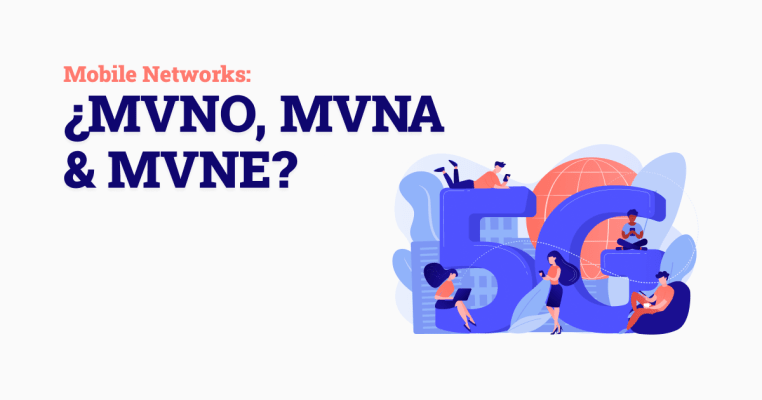The Fascinating World of Mobile Virtual Network Operators (MVNO)
Mobile telephony is a vast and fascinating world. Have you ever wondered how so many companies can offer mobile services without having their own signal towers? This is where Mobile Virtual Network Operators (MVNO), along with MVNA (Mobile Virtual Network Aggregator) and MVNE (Mobile Virtual Network Enabler), come into play. Let’s break down these concepts step by step.

What is an MVNO?
MVNOs, or Mobile Virtual Network Operators, are companies that provide mobile phone services without owning their own network infrastructure. Instead, they rent the infrastructure of large network operators, like AT&T in the United States and Telefónica in Latin America, to offer their own services.
Advantages of MVNOs
- Flexibility and Diversity: MVNOs can offer personalized plans and innovative promotions tailored to specific market niches.
- Reduced Costs: Without the need to maintain network infrastructure, MVNOs can offer more competitive prices.
- Customer Focus: Generally, MVNOs focus more on customer service and user experience, providing a more personalized and closer service.
One of the keys to the success of MVNOs is their ability to quickly adapt to market needs and offer differentiated services that traditional operators might overlook due to their size and rigid structure.
MVNA and MVNE: The Facilitators in the Shadows
MVNA (Mobile Virtual Network Aggregator)
An MVNA acts as an intermediary between large network operators and MVNOs. They negotiate network usage agreements with operators and then resell those services to multiple MVNOs. This allows MVNOs to access network infrastructure without having to negotiate directly with operators, simplifying the market entry process.
Function and Example of an MVNA
Imagine a small MVNO wants to launch its services but lacks the ability to negotiate with a giant like AT&T. An MVNA steps in, already having an agreement with AT&T, and offers that infrastructure to the MVNO, facilitating its launch and operation.
- Simplified Negotiation: The MVNA handles the network usage negotiations with large operators.
- Economies of Scale: By aggregating multiple MVNOs, the MVNA can obtain better rates and conditions than an individual MVNO.
MVNE (Mobile Virtual Network Enabler)
MVNEs provide the technological and operational infrastructure needed for an MVNO to function. This includes billing systems, customer management, technical support, and more.
Function and Example of an MVNE
Imagine you want to open a coffee shop. Even if you have the best coffee recipes, you need equipment like coffee machines, a payment system, and support staff to keep everything running. In this scenario, the MVNE would be the supplier of these equipment and services, ensuring that your coffee shop can operate efficiently.
- Billing Systems: An MVNE provides billing platforms and revenue management.
- Customer Management: Offers CRM (Customer Relationship Management) solutions to manage customer relationships.
- Technical Support: Provides the necessary technical support to operate and maintain the mobile service.
The Synergy Between MVNO, MVNA, and MVNE
The relationship between these three actors is synergistic. MVNA and MVNE allow MVNOs to enter the market more quickly and with less initial investment. MVNOs can focus on what they do best: marketing, sales, and customer service, leaving the technical and operational complexity to the MVNE, and infrastructure negotiations to the MVNA.
Benefits for the End User
- Variety of Options: More MVNOs in the market mean more options for consumers.
- Competitive Prices: Reduced operational costs allow MVNOs to offer lower rates.
- Service Innovation: MVNOs often introduce innovative and personalized services that traditional operators do not offer.
Final Thoughts
Innovation and collaboration between MVNO, MVNA, and MVNE have democratized access to telecommunications, offering more options and better prices to users. This synergy not only benefits consumers but also fosters a more competitive and dynamic market. Understanding these concepts allows us to make informed decisions about our mobile services and appreciate the options available in a constantly evolving market.





